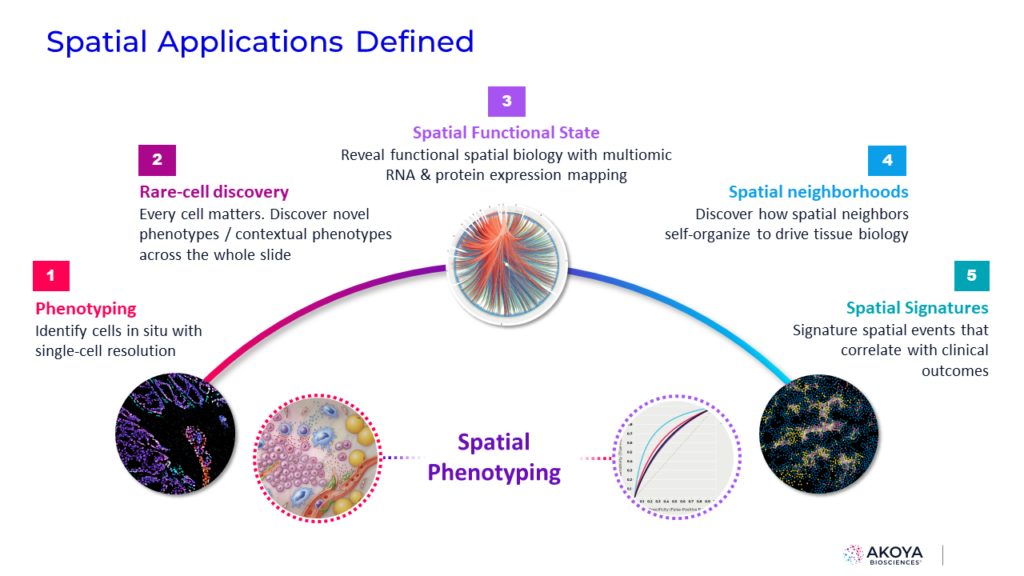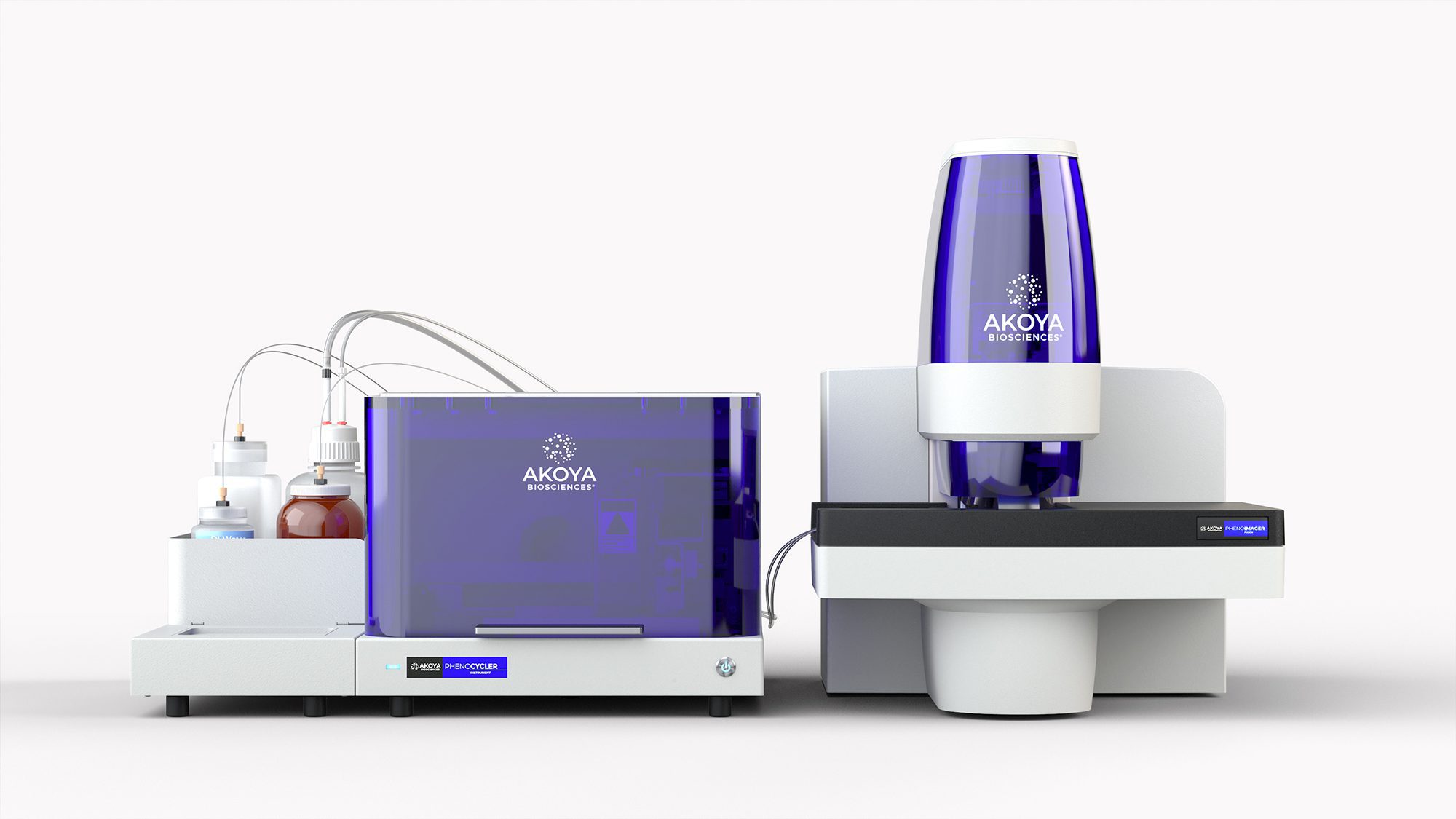Keeping pace in the rapidly growing field of spatial biology is a steep hill to climb—every day new applications are being discovered and our capabilities for deep investigation grow deeper. Setting the pace is an even tougher challenge, but difficult as it may seem, the Fusion platform delivers.
On January 13th, 2022, we at Akoya announced the commercial availability of the PhenoCycler™-Fusion system, setting a new standard in spatial biology for high-speed imaging of whole slides, at single-cell and sub-cellular resolution.
The PhenoCycler-Fusion is a breakthrough solution for comprehensive and unbiased spatial phenotyping. We call it Fusion because that’s exactly what the fusion instrument does. It fuses the strengths of the company’s automated, ultrahigh multiplex cycling platform, PhenoCycler (formerly CODEX), and its high-speed imaging platform, PhenoImager™ ( formerly Phenoptics), into an end-to-end, integrated workflow. The newly evolved capabilities for unprecedented speed will enable you to image multiple biomarkers and millions of cells across whole slides in just minutes, providing an unbiased view of how cells spatially organize and interact to influence disease outcomes.
Transforming Tissue Biology
The future of spatial biology is spatial phenotyping powered by Fusion. Spatial phenotyping is identifying every single cell across an entire tissue, this means analyzing each and every cell, and leaving no space unanalyzed.
Spatial phenotyping enables several applications, and each application builds upon the other. The first application is cellular phenotyping – identifying the types of cells in situ with single-cell resolution in an unbiased manner. If phenotyping is successfully achieved, rare cell discovery is possible.
Rare cell discovery is the ability to map every single cell within a tissue with the potential to identify a “1 in a million cell”. This ability offers the opportunity to study rare cell populations that may have an outsized effect on the functional outcomes of neighboring cells or the entire tissue–that’s the idea behind “every cell matters”. With the power to identify every cell within a tissue, we may now observe and study if these rare cells have a defined function and if they affect spatial activation states.
Spatial activation states require analysis via a multiomic perspective, that is, to include both RNA and protein expression mapping. With the powers of transcriptomics and proteomics combined, we can perform functional mapping of cells and understand what critical pathways are activated, and which pathways are not.

Spatial neighborhoods self-organize and drive tissue biology. Recent studies have already illustrated the power of spatial technologies and demonstrated how the organization and communication of cellular neighborhoods may influence disease progression [1].
The accumulation of each application facilitates our goal of identifying spatial signatures – critical events that correlate with clinical outcomes. Each tissue section now becomes an invaluable data point to be measured and compute algorithms with predictive powers in determining which patients may or may not respond to a given therapy.
These technologies have also been used to develop predictive algorithms: a recent study from Stanford derived the “SpatialScore” [2]. A SpatialScore calculates the physical distance ratio of CD4+ T cells and the nearest tumor cell relative to its nearest Treg. A lower SpatialScore suggests increased T cell effector activity and a higher SpatialScore suggests increased T cell suppression.
A Solution for Every User
Whether conducting discovery, translational, or clinical research, PhenoCycler-Fusion will serve the entirety of the spatial biology continuum, allowing fine tuning of your workflow to match your customized needs. The scalable nature of the PhenoCycler-Fusion system allows large high-plex panels for unbiased discovery when paired with the PhenoCycler or focused panels emphasizing high-throughput and sample size when in the translational or clinical stages of your research.
References
- Schurch et al. Coordinated Cellular Neighborhoods Orchestrate Antitumoral Immunity at the Colorectal Cancer Invasive Front 2020, Cell 182, 1341–1359
- Philips, et al. Immune Cell Topography Predicts Response to PD-1 Blockade in Cutaneous T Cell Lymphoma Nat Commun. 2021 Nov 18;12(1):6726







